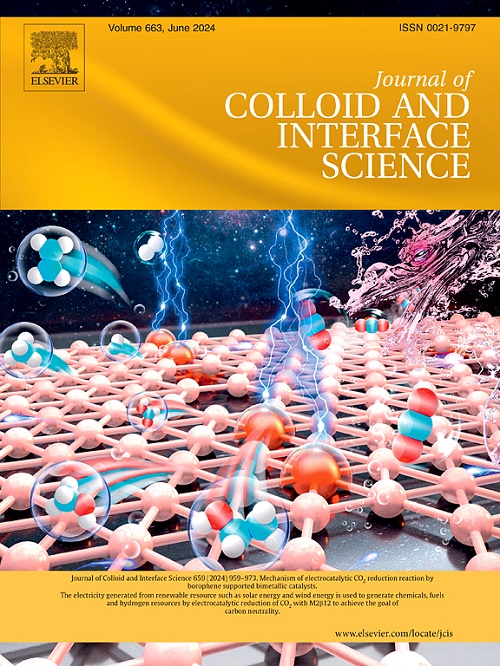室温甲醛气体传感器以局部表面等离子体共振效应为主,具有超高的灵敏度和选择性
IF 9.7
1区 化学
Q1 CHEMISTRY, PHYSICAL
引用次数: 0
摘要
通用灵敏度和工作温度高一直是半导体气体传感器在实际应用中面临的严重问题。利用光电和局部表面等离子体共振(LSPR)效应可以代替加热为电子提供能量。然而,光电效应和LSPR效应产生的电子之间的差异以及这些差异对气敏性能的影响尚不清楚。本文设计了金、银修饰的In2O3纳米立方体作为气体传感器,对上述问题进行了研究。研究了不同波长光下的气敏特性。获得了一种具有高灵敏度和选择性的室温自然光辅助气体传感器。详细讨论了影响选择性的关键因素,创新性地发现选择性与敏感材料的导带边缘能级密切相关。此外,揭示了LSPR效应提高气敏性能的原因是导带中增加的电子来自金属颗粒,从而降低了电子空穴复合率。采用密度泛函理论(DFT)为该方案提供理论支持。这项工作为开发室温高性能气体传感器开辟了一条新途径。本文章由计算机程序翻译,如有差异,请以英文原文为准。

Localized surface plasmon resonance effect dominates room temperature formaldehyde gas sensor with ultra-high sensitivity and selectivity
Universal sensitivity and high operating temperature have always been the serious problems faced by semiconductor based gas sensors in practical applications. The use of photoelectric and Localized Surface Plasmon Resonance (LSPR) effects can replace heating to provide energy to electrons. However, the differences between electrons generated by photoelectirc effect and LSPR effect, as well as the impact of these differences on gas sensing performance are still unclear. In this work, gold and silver modified In2O3 nanocubes are designed and employed as a gas sensor to study the above issues. The gas sensing characteristics under different wavelengths of light are researched. A room temperature natural light assisted gas sensor with high sensitivity and selectivity has been obtained. The key factors affecting selectivity are discussed in details and it is innovatively discovered that selectivity is closely related to the conduction band edge energy levels of sensitive materials. In addition, it is revealed that the reason why the LSPR effect improves gas sensing performance is that the increased electrons in the conduction band come from metal particles, thereby reducing the electron hole recombination rate. Density functional theory (DFT) is employed to provide theoretical support for the proposal. This work opened up a new strategy for the development of room temperature high performance gas sensors.
求助全文
通过发布文献求助,成功后即可免费获取论文全文。
去求助
来源期刊
CiteScore
16.10
自引率
7.10%
发文量
2568
审稿时长
2 months
期刊介绍:
The Journal of Colloid and Interface Science publishes original research findings on the fundamental principles of colloid and interface science, as well as innovative applications in various fields. The criteria for publication include impact, quality, novelty, and originality.
Emphasis:
The journal emphasizes fundamental scientific innovation within the following categories:
A.Colloidal Materials and Nanomaterials
B.Soft Colloidal and Self-Assembly Systems
C.Adsorption, Catalysis, and Electrochemistry
D.Interfacial Processes, Capillarity, and Wetting
E.Biomaterials and Nanomedicine
F.Energy Conversion and Storage, and Environmental Technologies

 求助内容:
求助内容: 应助结果提醒方式:
应助结果提醒方式:


